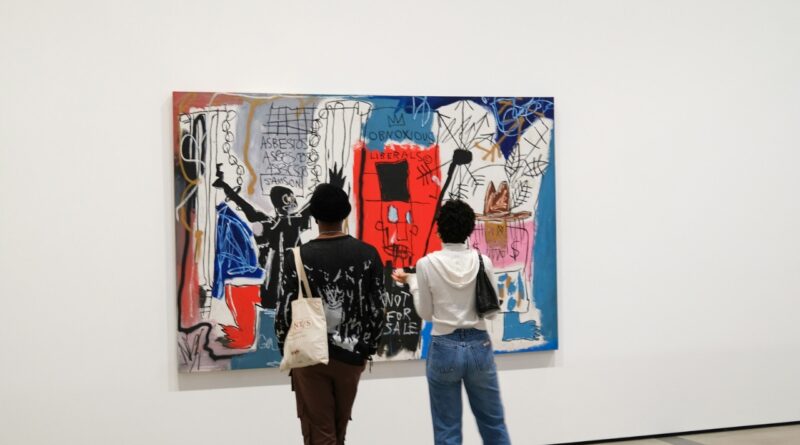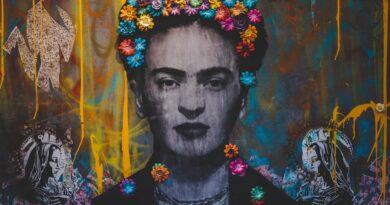Jean-Michel Basquiat: The Radiant Child of 80s Art Scene
Jean-Michel Basquiat emerged from the gritty New York City street art movement to become one of the most influential artists of his generation. His work, characterized by a raw, powerful energy and bold commentary on themes like race, class, and colonialism, challenged the traditional art establishment and left an indelible mark on the world of contemporary art.
From Graffiti to Galleries: Basquiat’s Meteoric Rise
Basquiat’s artistic journey began on the streets of Lower Manhattan, where he gained initial fame through his graffiti under the tag “SAMO©.” His graffiti, often consisting of cryptic aphorisms, captured the attention of the city’s art scene. By the early 1980s, Basquiat transitioned from street art to galleries, quickly becoming a sensation for his distinctive fusion of words, symbols, and imagery.
Artistic Innovations: A New Language of Expression
Basquiat’s canvases were a riot of color, text, and imagery, drawing from a vast array of sources, including African art, music, poetry, and his Caribbean heritage (his father was Haitian, and his mother was of Puerto Rican descent). His work often featured skeletal figures, masked characters, and a cryptic lexicon of symbols that challenged viewers to decipher complex narratives about identity, power, and history.
Themes of Race and Identity
A central theme in Basquiat’s work is his exploration of race and identity in a predominantly white art world. He tackled issues of racism, social injustice, and the complexities of black identity with a boldness that was unprecedented at the time. Works like “Irony of a Negro Policeman” and “Boy and Dog in a Johnnypump” are poignant commentaries on the structures of power and racial inequality.
Collaboration and Friendship with Andy Warhol
One of the most notable aspects of Basquiat’s career was his friendship and collaboration with Andy Warhol, one of the most prominent artists of the 20th century. Their partnership was both a creative exchange and a symbolic bridging of different art movements and generations. Despite their contrasting styles, Warhol and Basquiat produced a series of compelling works that reflected their mutual respect and artistic synergy.
Tragic End and Lasting Legacy
Basquiat’s career was as brief as it was brilliant. He died in 1988 at the age of 27 from a heroin overdose, joining the tragic ranks of talented artists whose lives were cut short. Despite his short career, Basquiat’s work has had a lasting impact on the art world and popular culture. His art continues to be celebrated for its raw energy, complex layering of meanings, and powerful commentary on social issues.
Jean-Michel Basquiat’s legacy is a testament to the power of art to challenge, provoke, and inspire. His work remains a critical lens through which to explore issues of race, identity, and society, making his story and artistry as relevant today as ever. In exploring Basquiat’s life and work, we are reminded of the enduring power of art to reflect and shape the world around us.



